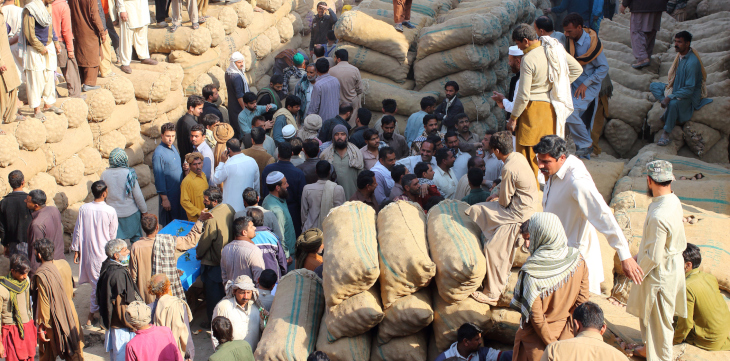Pakistan: Implementing the new IMF programme to get out of the crisis will be challenging

Event
The IMF has approved a 39-month financial package worth USD 6 bn. It allows for an immediate first loan disbursement of around USD 1 bn. This comes in addition to a broad financing support provided in the previous months by Pakistan’s partners, namely Saudi Arabia and the United Arab Emirates (USD 5 bn) and China (USD 2.2 bn). Among the main targets, the programme foresees an ambitious fiscal consolidation together with heightened social spending, a more flexible exchange rate and an energy sector reform.
Impact
It had been expected for months and eventually could no longer be avoided. Six years after the previous one, Pakistan has been granted an IMF bailout – the 13th in 30 years. IMF conditions are tough and highlight how bad the economic and financial situations have become. Main economic indicators are even worse than in 2013 with large internal and external imbalances. The twin deficit is wide (the current account deficit amounted to 6.3% of GDP and the fiscal deficit to 6.4% of GDP in FY 2017/18), external debt has rapidly increased between 2013 and 2018 (from 116.7% to 180% of current account receipts), particularly external public debt to China – 25% of the total – whereas foreign exchange reserves have halved in the past two years. External loans from Pakistan’s allies and Pakistani rupee depreciations (equal to a loss of a third of its value against the US dollar over the past 12 months) have bought time but not stopped the negative trend in liquidity. Extra loans from Pakistan’s allies, the financing granted by the IMF and other multilaterals (e.g. ADB, World Bank) and an international bond issuance scheduled in the 4th quarter of 2019 should allow meeting external financing needs in the one-year outlook.

Still, the economic outlook is very challenging as economic hardness will continue in the short term before improving. As a result of the government austerity plan, GDP growth is expected to fall to a 10-year low at 2.4% in FY 2019/20 before gradually rising to higher levels (potentially 5% in the MLT). PM Khan’s budget 2019/20 complies with IMF targets and plans to raise extremely weak government revenues through a range of fiscal measures including a sharp increase in income tax. Controversial big hikes in utility prices have also been decided. As a result and also taking into account Pakistani rupee depreciation and higher oil prices, inflation pressures have increased to reach the double-digit area. Hence, the State Bank of Pakistan will maintain its monetary tightening after it has announced an extra hike of 100 basis points in its interest rate to 13.25% (from 6.50% one year ago). This environment is expected to continue in the second half-year of 2019 given the wide current account deficit and weak economic context.
Looking ahead, based on Pakistan’s previous IMF programmes, the biggest challenge will be to implement in full very unpopular austerity measures. At the moment, the government shows commitment to the IMF programme. However, fast-increasing living costs and popular anger about a perceived submission to foreign policies will certainly trigger large popular and anti-government protests in the upcoming weeks and months. This being said, the need to tackle the economic crisis and crucial army support should allow PM Khan to stay firm on his commitments in the near term. This will be essential to ensure external debt sustainability.
Further issues could complicate the government task in the one-year outlook. Pakistan is facing the risk of being put on the intergovernmental Financial Action Task Force’s (FTAF) blacklist for failing to sufficiently crack down money laundering and terrorism financing. Nonetheless, given the negative impact it could have on capital inflows and thus IMF financing, the IMF package, some recent anti-terrorist measures taken by Pakistan (e.g. the arrest of the group’s mastermind responsible for the 2008 Mumbai attacks) but also its involvement in current peace talks in Afghanistan are likely to put the country on the grey list. Another problem is the recent World Bank arbitration tribunal’s ruling urging Pakistan to pay indemnities of around USD 6 bn to the Tethyan Copper Company (a Canadian-Chilean joint venture) about a disputed mining lease in the Balochistan province. The Tethyan Copper Company and the Pakistan government have announced that they will negotiate an acceptable settlement. A third risk is the high risk of political violence as highlighted by Credendo’s classification 6/7. First domestically, with the rising IS threat in the restive Balochistan province which could undermine some major BRI-related infrastructure projects. Then externally, strained relations with India have persisted since February in Kashmir where possible violent unrest could revive the risk of tit-for-tat strikes.
Analyst: Raphaël Cecchi – r.cecchi@credendo.com